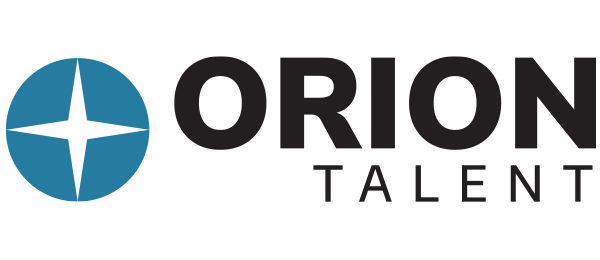.jpg)
Guest Written by Katie Mychalowych, People Partner at Orion Talent, and Originally Published on LinkedIn
Being a leader is not always the glamorous, shiny, brass-on-the-shoulders thing we make it out to be, where one sharp young soul in a power suit and Louboutins takes the startup public at $80 a share right before Christmas, kombucha on tap for all.
Moments like that are, of course, wonderful, and inspirational, but at the same time, they’re rare. They’re fleeting, ephemeral—not a drop in the bucket of the day-to-day things that make a leader over time. The rest is in the messy, the gritty, the routine muck-shoveling and ditch-digging alongside your people. It’s hardly glamorous; in fact, it’s more often the opposite.
And in a remote setting, it gets even messier. There’s more that’s nebulous, uncertain, uncharted, invisible. (You can’t even SEE my Louboutins over Zoom.) We have less of a pulse on where things stand, less of a connection with our team members, less of a feeling of what’s really going on and how best to inspire, to help.
So what makes an unglamorous, invisible, slipper-wearing remote leader successful?
That’s the question, isn’t it.
Are Employees Going Back into the Office?
We’ve seen a lot of "return to office" initiatives in the last few months, presumably for different reasons, contexts, industries, yadda yadda. We’re seeing people approach this question and get too afraid, or too impatient, or just too plain tired to try and figure it out. (And honestly, I can’t blame them all; it’s been a rough go of it since 2020.)
But for many of us, we have no other option. Remote is our reality. We must figure this out. Because the economy keeps waffling, Tax Day keeps coming, and our employees are the ones who will carry the bulk of the load. So how do we lead them?
Leadership is a distinctly human thing, a human interaction, a relational dynamic that no ChatGPT model will ever be able to reproduce or replicate. It’s a back-and-forth process that takes intimate knowledge of all the things that make us who and what we are, a deliberate study of souls and psyches, an intentional probing of the “why” behind the “what.” It’s how we harness the full power of the human collective, inspire each other to move in unison and achieve incredible things that we’d never do on our own.
When we’re operating only behind a screen, our work styles, communication preferences, and team makeup may look different than when we're in-person. These may be, in a very real sense, dictated by the size and success of our company, the tech stack we can afford, and the industry we play in. But we’re still the same individuals with the same needs, the same personalities, the same hopes and dreams and families and extracurricular responsibilities.
What Makes a Good Remote Leader?
The fundamental theories of leadership shouldn’t change—they can’t. But they can be attended to a little differently, a little more carefully.
I’ll offer the following suggestions and observations that can aid in sharpening your remote-leadership capabilities that, while not exactly glamorous, can have a big impact on the ones under (and adjacent) to your umbrella.
1. Adopt an authentic leadership style even if it’s not your default.
Authentic leadership theory is a new-ish concept that’s been getting more attention since it surfaced in the early 2000s. At its core it’s about being a genuine, “authentic” person, leading with heart and moral conviction. According to Northouse (2022), authentic leaders will have five critical characteristics: 1) they are purposeful; 2) they have strong values; 3) they are relationship-driven; and 4) they are empathetic.
 In a virtual work-world, our interactions with others are limited, curated instances that don’t necessarily give us the full picture. We tend to discuss work-things and work-goals and work-tasks. Which isn’t wrong, it’s just impersonal. And we (as leaders) can lose sight of, or even forget, that our employees are also human beings with feelings, 360-degree experiences, and things that impact their life beyond the tug of the VPN.
In a virtual work-world, our interactions with others are limited, curated instances that don’t necessarily give us the full picture. We tend to discuss work-things and work-goals and work-tasks. Which isn’t wrong, it’s just impersonal. And we (as leaders) can lose sight of, or even forget, that our employees are also human beings with feelings, 360-degree experiences, and things that impact their life beyond the tug of the VPN.
But by intentionally cultivating an authentic style, you can set the tone for each of these interactions to be a little more—(dare I say it)—authentic. Even if they’re sparse, intermittent interactions (because nonstop meetings in the name of “connection” is also not the answer); cultivating empathy, showing trust, and living your values can turn a quick check-in into a moment of community that gives your team permission to feel… like humans. To feel safe. Like they are allowed to experience more than the value they bring to the bottom line—because you—also human—make that the standard.
Of course, oversharing is not helpful, either. Brené Brown talks about how to avoid this on a TED podcast here.
2. Get overly clear on strategy, goaling, priorities, and timelines.
This is ESPECIALLY key for asynchronous or teams in multiple time zones. If your umbrella extends around the country or around the world – you have GOT to be sure that every person on your team knows exactly what is expected of them, at all times. Leonardelli (2022) recommends defining goals as precisely as possible; so one person can pick up where another left off without question. (P.S. that’s an incredibly empowering way to work!)
And this isn’t a one-and-done thing, either. Team dynamics shift over time, new people can join; heck—they can forget what’s important. Try to reiterate your team’s priorities as often as you can. Ensure goals are set to coincide with strategy and company direction. Overcommunicate timelines, due dates, and free up as much unnecessary red tape that you can. Utilize the Objectives and Key Results (OKR) framework to best help drill down overarching goals to reasonable milestones. And don’t forget to ask if these things are clear. (Sometimes we’re blind to our own flaws.) Maybe they’re not, and maybe you could do better.
forget what’s important. Try to reiterate your team’s priorities as often as you can. Ensure goals are set to coincide with strategy and company direction. Overcommunicate timelines, due dates, and free up as much unnecessary red tape that you can. Utilize the Objectives and Key Results (OKR) framework to best help drill down overarching goals to reasonable milestones. And don’t forget to ask if these things are clear. (Sometimes we’re blind to our own flaws.) Maybe they’re not, and maybe you could do better.
3. Consider yourself a “techie” even if you are not interested in technology.
Remote leaders are (by the very nature of being “remote”) compelled to be interested in technology. You cannot appropriately function in your role if you aren’t (or at least trying) to be an expert in whatever communicative tech stack you use. And as a leader, you set the tone for your team and for others in your company. If you’re fighting with the tech, refusing to learn new tools, (or not even trying), you’re becoming a barrier to synergy and success.
I’d even take this one step further. I’d recommend considering yourself an “obsessive techie.” Set Google alerts for new apps that might help your team improve efficiencies. Look for new companies that specialize in project management software that might be better than the one you’re currently using. Network with others in similar leadership positions in various industries to see what’s working for them. What are their recent lessons learned?
After all, we’re forging new ground here. This remote-forward world of work did not exist the way that it does now (and as recently as 2019). If we’re not actively trying to find the new, the current, the better, we’re relying on ways of doing from 20 years ago that are just no longer relevant in the current landscape. If we’re not part of the cutting edge, we’re going to fall behind.
4. Don’t forget Maier’s (1955) equation… job performance = motivation X ability.
 This doesn’t change in a remote context. Performance will always be a product of motivation and ability; but how that plays out will be unique to your dynamic. Motivation is typically the key variable here. Your people were hired for their ability, now it’s your job to motivate them. My favorite motivational theory – Maslow’s needs hierarchy – says we have lower-level and higher-level needs that all must be fulfilled before we can work from a space of self-actualization, of complete freedom (Latham, 2012).
This doesn’t change in a remote context. Performance will always be a product of motivation and ability; but how that plays out will be unique to your dynamic. Motivation is typically the key variable here. Your people were hired for their ability, now it’s your job to motivate them. My favorite motivational theory – Maslow’s needs hierarchy – says we have lower-level and higher-level needs that all must be fulfilled before we can work from a space of self-actualization, of complete freedom (Latham, 2012).
How do you fulfill your teams’ needs? Do you provide equipment for them to work? WiFi? (AKA their “physiological” needs?) Do they feel safe? Do they feel like they belong? Do they feel recognized, valued? All these things matter… and it’s up to you to make sure you figure out a way to do that in your specific context. (Side note – this is a great time to pull in a People Partner!)
And I put this last because if there is no authentic relationship developed, no goals or direction set, no priority to stay informed, then motivation means nothing. Your remote team could be motivated up one side and down another but not trust you or know what to focus on… and it would mean nothing. Maier’s equation is important, but it’s not the full picture.
Final Thoughts
Leadership, like life, is a process, an iteration, a whole heck of a lot of trial-and-error. What works for some may not work for others. And working 100% remote is still a little new, still a little untested. How lucky are we to be part of the path-forgers that will set the tone for generations to follow? I don’t know about you, but I think that’s pretty darn cool... invisible Louboutins and all.
Be sure to follow Guest Writer Katie Mychalowych on LinkedIn for industry expertise, and tune in to the Orion Insights Blog for industry news, thought leadership, and hiring trends. If you need help meeting your hiring goals, check out what Orion Talent has to offer.

Author Bio: Katie Mychalowych is a People Partner at Orion Talent. Before Orion, she worked for Sonos, Inc., and started out her career as a military officer. Katie has a Master's degree in Industrial/ Organizational Psychology and is certified in Project Management. She's passionate about leveraging research to make work happier, healthier, and more productive! You can connect with her on LinkedIn.
References:
Latham, G. (2012). Work motivation: History, theory, research, and practice. (2nd edition). SAGE.
Leonardelli, G. (2022). Lessons from a crisis: Identity as a means of leading remote workforces effectively. Organizational Dynamics, 51. 1-15.
Northouse, P. (2022). Leadership, practice and theory. (9th edition). SAGE.
Archives
- January 2026
- December 2025
- November 2025
- October 2025
- September 2025
- August 2025
- July 2025
- June 2025
- May 2025
- April 2025
- March 2025
- February 2025
- October 2024
- May 2024
- March 2024
- February 2024
- January 2024
- December 2023
- November 2023
- October 2023
- September 2023
- August 2023
- July 2023
- June 2023
- May 2023
- April 2023
- March 2023
- February 2023
- January 2023
- December 2022
- November 2022
- October 2022
- September 2022
- August 2022
- July 2022
- June 2022
- May 2022
- April 2022
- March 2022
- February 2022
- January 2022
- December 2021
- November 2021
- October 2021
- September 2021
- August 2021
- July 2021
- June 2021
- May 2021
- April 2021
- March 2021
- February 2021
- January 2021
- December 2020
- November 2020
- October 2020
- September 2020
- August 2020
- July 2020
- June 2020
- May 2020
- April 2020
- March 2020
- February 2020
- January 2020
- December 2019
- November 2019
- October 2019
- September 2019
- August 2019
- July 2019
- June 2019
- May 2019
- April 2019
- March 2019
- February 2019
- January 2019
- December 2018
- November 2018
- October 2018
- September 2018
- August 2018
- July 2018
- June 2018
- May 2018
- April 2018
- March 2018
- February 2018
- January 2018
- December 2017
- November 2017
- October 2017
- September 2017
- August 2017
- July 2017
- June 2017
- May 2017
- March 2017
- February 2017
- January 2017
 RSS Feed
RSS Feed

.jpg)



















